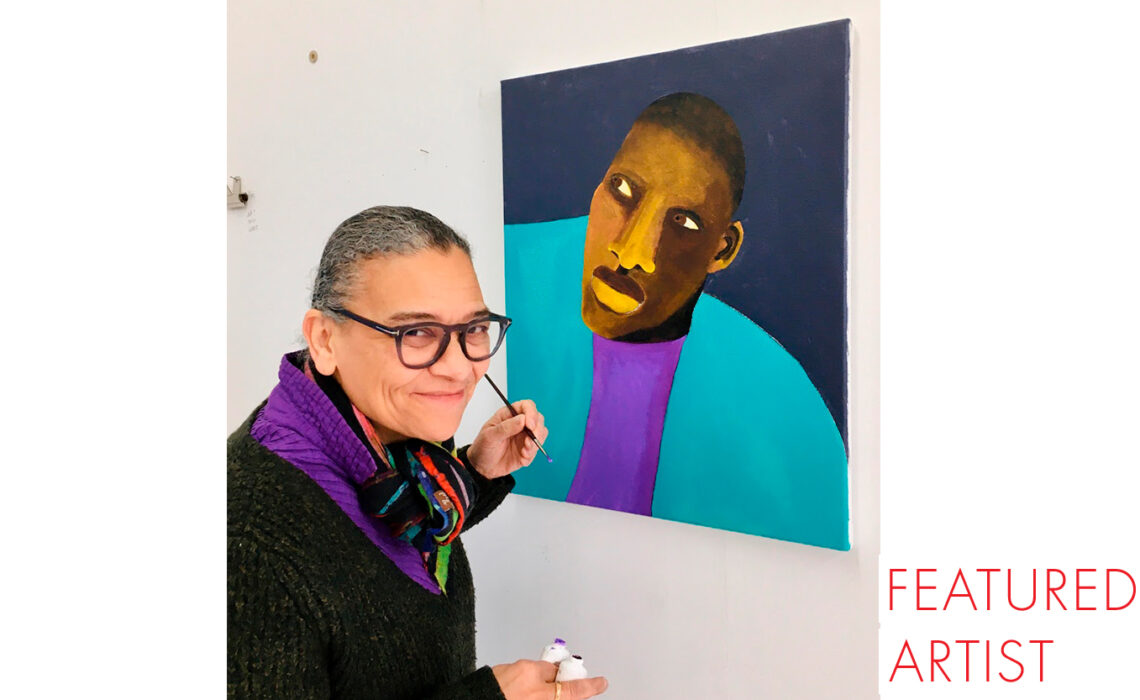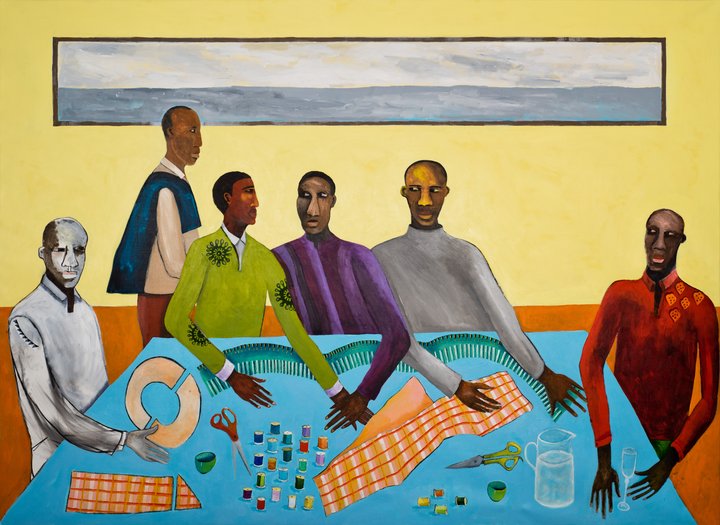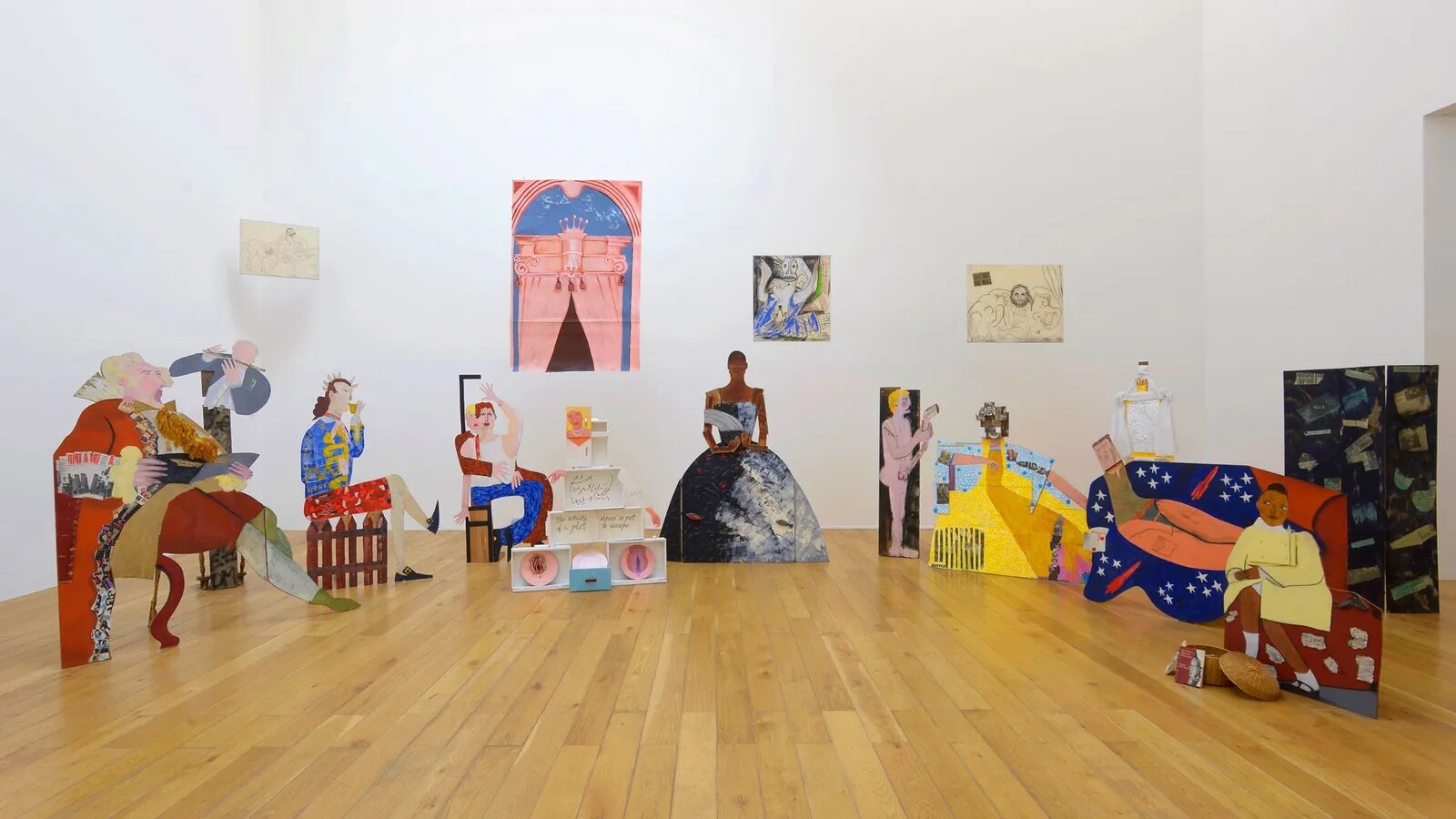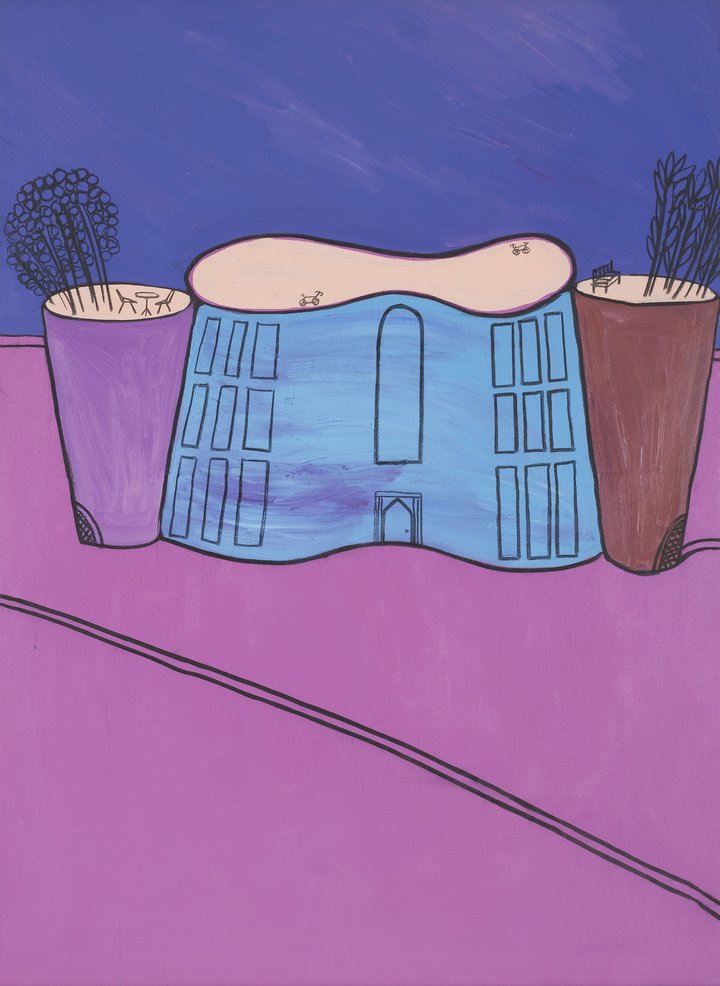
Lubaina Himid: Art as Social Engagement
Born in Zanzibar in 1954, Lubaina Himid is a British painter who has dedicated her four-decades-long career to uncovering marginalised and silenced histories, figures, and cultural expressions.
The work of Lubaina Himid is probably more recognized since she won the Turner Prize in 2017, just after the under-50 age restriction was removed. However, her work is one of the earliest references of art involved with social movements for black people’s rights. In the 80’s, her paintings become important for their contributions to the British Black arts movement, making space for the expression and recognition of Black experience and women’s creativity.
- Lubaina Himd, Six Tailors.
Himid makes paintings, prints, drawings and installations which celebrate Black creativity and the people of the African diaspora while challenging institutional invisibility. She references the slave industry and its legacies, and addresses the hidden and neglected cultural contribution made by real but forgotten people. In Naming the Money 2014, 100 cut-out life size figures depict Black servants and labourers who Himid individualises, giving each of them a name and story to work against the sense of the powerless mass. She often takes her paintings off the gallery wall so that her images become objects that surround the viewer. Whether working on Guardian newspapers or directly onto porcelain tableware, Himid continually subjects painting to the material of everyday life in order to explore Black identity.
- A Fashionable Marriage (1984-86) is among the exhibits at the Tate Modern’s retrospective (Credit: Nottingham Contemporary/ Andy Keate/ Courtesy the artist/ Hollybush Gardens)
She originally studied Theatre Design at Wimbledon College of Art following her interest for provoking encounters with the audiences. However, she notice very soon that theatre was not for her and decided to turned her career into the visual art. Some aspects of theatre are still present in her installations, as a way of designing a proper space for the work’s narrative. Himid also received a MA in Cultural History from the Royal College of Art and is a professor at the at the University of Central Lancashire. She has constantly mentioned that being a professor is a fundamental part of her artistic pratice as one of his main objectives is questioning the Western narratives arround black history.
- Lubaina Himid, East Wing West Wing, 1997-98
In 2021 Himid is now presenting a major monographic exhibition at Tate Modern, London. Current exhibitions include Risquons-Tout, WIELS, Contemporary Art Centre, Brussels. Significant solo exhibitions include Spotlights, Tate Britain, London (2019); The Grab Test, Frans Hals Museum, Haarlem, The Netherlands (2019); Lubaina Himid, CAPC Bordeaux, France (2019); Work From Underneath, New Museum, New York (2019); Gifts to Kings, MRAC Languedoc Roussillon Midi-Pyrénées, Sérignan (2018); Our Kisses are Petals, BALTIC Centre for Contemporary Art, Gateshead (2018); The Truth Is Never Watertight, Badischer Kunstverein, Karlsruhe (2017); Navigation Charts, Spike Island, Bristol (2017); and Invisible Strategies, Modern Art Oxford (2017). Significant group exhibitions include En Plein Air, The High Line, New York (2019–2020); Sharjah Biennial 14, UAE (2019); Berlin Biennale (2018); The Place is Here, Nottingham Contemporary, UK (2017); Keywords, Tate Liverpool (2014); and Burning Down the House, Gwangju Biennale (2014). Her work is held in various museum and public collections, including Tate; British Council Collection; Arts Council Collection; UK Government Art Collection; Museum Ludwig, Cologne; Victoria & Albert Museum, London; National Museums Liverpool; Whitworth Art Gallery, Manchester; Hammer Museum, Los Angeles; and Rhode Island School of Design, Providence. A monograph, titled Lubaina Himid: Workshop Manual, was released in 2019 from Koenig Books.





